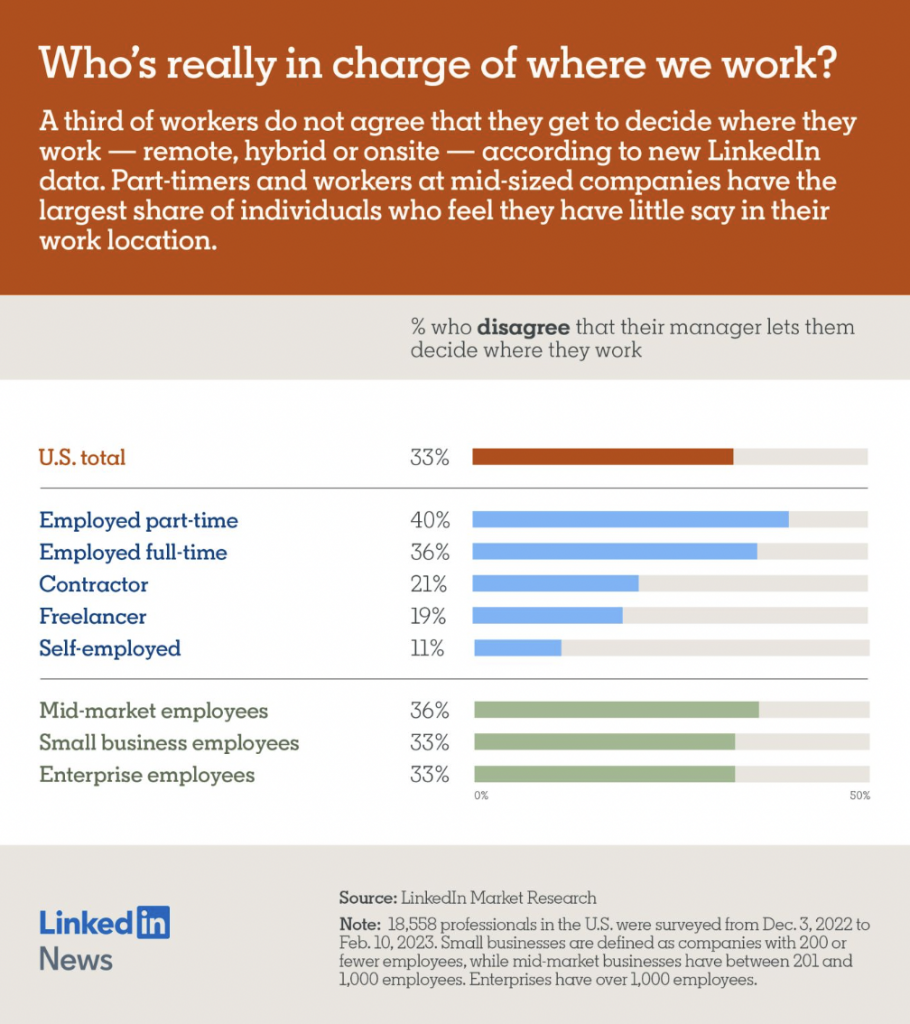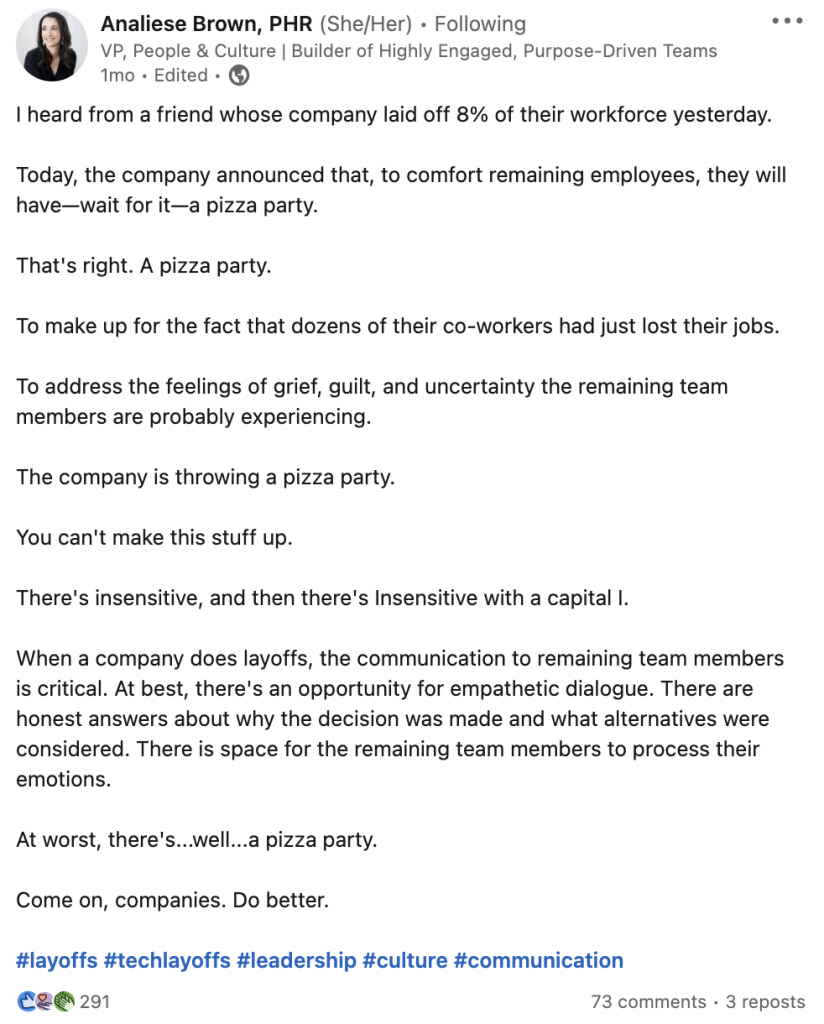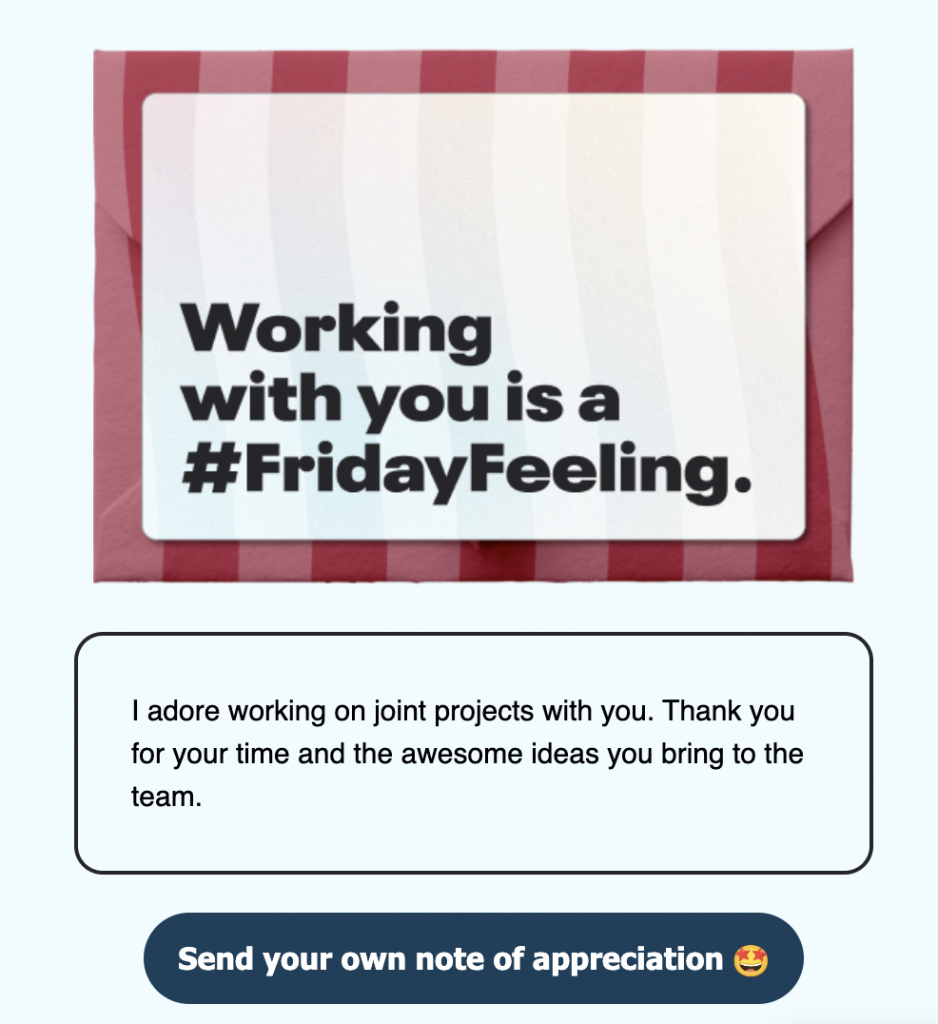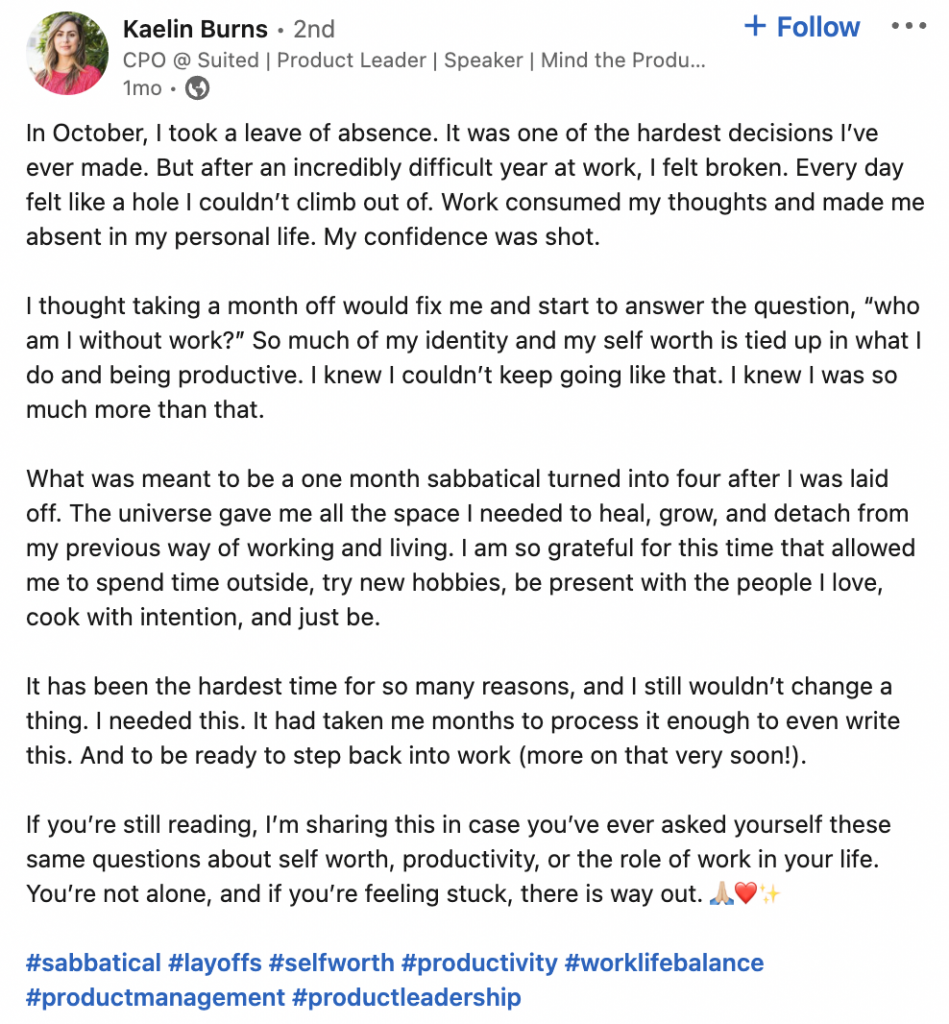
08th May 2023
Guest Post: The case for a human approach to employee productivity

In the wake of widespread layoffs, an impending recession, and increased financial stress, the news of employee productivity hitting record lows has sent many employers into panic mode. As companies rush to find the culprit—remote work, high turnover, lack of skilled workers?—they’re overlooking an important piece: The employees who remain (and are dealing with increased workloads) need our care and support. Give them that, and productivity will follow.
And this comes at a time when HR leaders are burned out as they’re tasked with doing more with lower budgets and smaller teams. We’re not here to add yet another item to your ever-growing to-do list; we’re here to lighten the load with some good news! Taking a human approach to employee productivity is good for individuals, teams, and the overall business—which will ultimately drive the impact you’re looking for. According to the World Economic Forum, human approach means shifting the focus from employee outputs to the employees themselves: their wellbeing, happiness, and engagement. Because peak performance flows from those people-centered metrics—and employers have a responsibility to cultivate a work environment that facilitates this.
We know you care about your people. In fact, recent Gartner research found that 96% of HR leaders are even more concerned about employees’ wellbeing now than they were pre-pandemic. It’s just hard to filter out the noise and figure out the best actions to take care of your workforce.
That’s why we’re here. Below, we’ll explore the nuanced reasons employees aren’t feeling motivated, plus equip you with the strategies for meaningfully addressing productivity at work by boosting employee engagement and wellbeing.
4 reasons your employees’ productivity is impacted right now.
The current hyper-focus on productivity makes sense when put into context with what’s happening globally. When The Conference Board, a nonpartisan think tank, released its Global Economic Outlook for 2023, it predicted a sharp decline in growth across the world, with recessions “likely” in the U.S. and Europe. As stated in its report: “Productivity increases will become more important drivers of output and revenue growth.”
Faced with economic uncertainty, every organization is trying to figure out how to drive growth while the workforce grapples with high levels of burnout, increased cost of living due to inflation, and continued layoffs.
We’re balancing two seemingly impossible things: Organizations need to be more productive to drive growth at a time when employees feel demotivated—which is decreasing their productivity. For workers, they’re taking on the tasks left behind by those who were laid off, watching their paychecks get devoured by inflation as their dollars don’t go as far as before, and still struggling with the effects of isolation and chaos from the pandemic.
How do we define productivity? The U.S. Bureau of Labor Statistics, which has measured labor productivity since 1947, defines it as “output per hour of labor.” It is one metric that shows the health of the economy, and it’s closely related to GDP. In 2022, as remote work blurred the lines between work and personal life, and inflation and high cost of living added to people’s financial stress, worker productivity had the fastest decline in four decades.
But pinning the success of an economy or even a business on employee productivity alone isn’t a great idea. “Output per hour of labor” works fine—for machines pumping out widgets; it denotes a sameness, a rigid efficiency befitting of steel and electricity. But in this digital age where workers are tasked with being creative, focusing on quantity doesn’t fit. Unlike machines, workers produce ideas (which are hard to quantify), and they’re human beings who need purpose and well-being (not oil and hardware) to thrive.
As Dominic Price writes for the Atlassian blog, “Productivity has always been a good way to measure the impact of machines and capital. It’s just never been a good way to measure the impact of humans.”
Productivity in the traditional sense of maximizing what you get is not the only way to measure the success of your organization. If your outputs are satisfactory, but your people are burned out and turnover is high—is that sustainable and can you really call that a success?
Let’s reframe the conversation around employee productivity and place the focus back on the people it affects. Here are the factors that are demotivating your employees.
1. High turnover (from attrition and from anxiety around layoffs).
Economists point to turnover as one factor in falling productivity. In the aftermath of the Great Resignation, employees who remained were left to take on more tasks as employers scrambled to fill vacant roles and train new hires.
On top of that, layoffs continue into 2023. In February, Korn Ferry’s Dan Kaplan told HR Brew that many companies are “trimming” their workforce by 5-7%. The result of seeing their coworkers’ losing their jobs is that many who remain face increasing anxiety—and may choose to leave too.
To make matters worse, many are questioning the necessity of recent layoffs, or of any layoffs at all. “Layoffs do not solve what is often the underlying problem,” Stanford business professor Jeffrey Pfeffer told Stanford News, “which is often an ineffective strategy, a loss of market share, or too little revenue. Layoffs are basically a bad decision.”
2. Employee wellbeing is compromised.
Even the employees who keep their jobs suffer the stress from layoffs. Pfeffer pointed to a Stanford study he co-authored that found 5%–8% of annual healthcare costs are associated with how U.S. companies manage their workers and workplaces. It’s a sobering reminder of employers’ responsibility to care for employees’ mental health. After layoffs, not only are workers often left doing two jobs to make up for those who were let go, but they also experience lower job security as they wonder if they might be next.
As a result, work-life balance is harder to stick to, and employees may feel like they can’t achieve balance given everything that’s happened. Multiple studies show that people worked more hours when they switched to working from home during the pandemic. Two reasons for this are that the time saved on commuting was spent on working more, and it’s harder to set boundaries without the physical distinction (i.e., an office) between work and personal life.
It’s always important for employers to support creating work boundaries to protect employees’ health, and especially so during turbulent times. This begins with setting a good example at the leadership level so healthy boundaries trickle down from leadership to direct reports. If a manager touts work-life balance but frequently takes calls while on vacation or forgoes lunch breaks to scarf down a snack at their desk while working—employees will know there’s no real emphasis on boundaries. Getting leadership buy-in means showing them the real, tangible impact boundary-setting has on retention, happiness, and productivity.
3. Employees aren’t being rewarded for their efforts, and their trust has been shaken.
There’s never a “good” time for layoffs, but after the emotional rollercoaster of the pandemic (when many workers burned out from remote and hybrid work transitions, in addition to stress and fallout from the pandemic itself), layoffs were particularly painful. Staying loyal and working hard through the ups and downs of the past few years only to lose their jobs in the end stung like betrayal.
As NPR put it (paraphrasing Julia Pollak, chief economist with ZipRecruiter): “Workers came away from all of this feeling like the connection between working hard and being rewarded was broken.”
Fast Company is calling these layoffs the “Great Betrayal” and reports that 66% of employees have lost “trust in the stability and security of full-time employment,” and 62% feel “less secure committing to one employer.” These findings are from its November 2022 survey of 500 U.S. knowledge workers.
With their faith shaken, workers understandably don’t see the value in putting forth extra effort, which is why building a culture of employee appreciation is all the more important. By thanking them for specific efforts they’ve made, you can rebuild the connection between work and reward—and rebuild trust.
4. Hybrid work is still a work in progress.
If you’re still figuring out the best ways to navigate the hybrid work model, you’re not alone. The transition to blending remote and onsite work has created feelings of instability for everyone—especially employees.
A McKinsey survey found that those working within a flexible model (partially remote) were most likely to report obstacles compared to those who were fully remote or fully onsite. Though the report authors are careful to note that their research didn’t establish cause and effect, they propose that hybrid workers face challenges with balancing on-site and at-home work, and the costs of context-switching between these work environments. The authors say the results “underscore a need for employers to support workers with issues that interfere with effective work.”
While some leaders believe that bringing employees back into the office will fix the issue, that’s not necessarily the case. Major companies are mandating a return to the office. But even as leaders push a return to the office, workers are asking for more flexibility and control over their work schedule. A Dialpad-WeWork survey found that 73% of employees think it’s best to decide their own hybrid work schedule versus having a company-wide policy that applies to all employees.
When companies offer flexibility, but then mandate which days and times employees must come into the office, it negates one of the key benefits of hybrid work: autonomy to identify and choose where and how we work best.
On top of that, no one’s sure who’s responsible for calling the shots. “Is it human resources, the manager, or the individual employee?” said TinyPulse people scientist Elora Voyles in an interview with CNBC. “These are questions that cause employees to feel a lack of control because the outcome is being decided for them.”
If it feels like your employees are being unproductive because of hybrid work, think again. As Gartner research director Caitlin Duffy tells WorkLife News: “Many of the problems leaders are experiencing are not the result of hybrid work itself, but a failure to fully optimize it.”
To that end, Stanford professor Nicholas Bloom points to one approach and its advantages: the “well-organized hybrid” (where everyone comes into the office on specific days of the week for meetings and social events, and works from home the other days). Bloom says studies show that workers save 70 minutes a day thanks to less time spent commuting and getting ready, and use 30 minutes of that to do more work. The other 40 minutes are spent on childcare or leisure time, which is good for employee wellbeing.
Now that you know the factors that are demotivating employees, let’s dive into actionable strategies you can use to support your employees as whole humans, thereby boosting productivity.
5 ways to take a human-centered approach to productivity (especially in economic uncertainty).
Focusing on productivity alone only serves to demotivate employees. We’re advocating for a more human-centered approach, one grounded in employee wellbeing and a culture of recognition as the building blocks of a high-performing organization.
“This general bias of productivity over employee wellbeing is fundamentally an issue that has never been resolved,” explains University of Tennessee Lean Manufacturing expert Rupy Sawhney in an October 2022 interview. “And when people are put under pressure to choose one over the other, it is generally productivity that has priority.”
Sawhney suggests an approach that balances “taking care of people” with “taking care of business” by focusing on wellbeing and retention in addition to productivity. This human-centered approach to productivity pays dividends. According to Gartner, employees who are prioritized as a human versus just an employee are:
- 3.1x more likely to experience lower levels of fatigue
- 2.3x more likely to highly intend to stay
- 3.8x more likely to display high performance
So how can you craft a human-centered approach to employee productivity, one that’s simultaneously good for your people and the business?
1. Recommit to the employee experience.
In a bid to re-engage employees and boost their productivity and loyalty, many companies are turning to employee experience managers. Though not a new job, it’s one that is growing in popularity. The job ranks fifth on LinkedIn’s list of 2023 U.S. roles that are in demand. According to LinkedIn, “Employee experience managers oversee processes that support employee engagement, well-being and development within an organization, which may include training programs and mentoring initiatives.”
As companies refine their hybrid work models, employee experience managers are focused on ensuring company culture alignment across cultures, time zones, and working styles. Even now, employees and employers are struggling just to agree on the issue of where to work. One-third of U.S. employees disagree that their manager lets them choose where they work, according to a recent LinkedIn survey.

One-third of U.S. employees disagree that their employer lets them choose where they work, according to LinkedIn survey data.
While you don’t have to create a dedicated employee experience manager role, you can ensure all people managers are equipped to cultivate a positive employee experience through things like leadership development training. You can also create Employee Resource Groups and mentoring programs to ensure your people and culture are aligned.
2. Grant autonomy through collaborative RTO planning and rollout.
Employees are pushing back against rigid, company-wide mandates to return to the office. Your team is just that—a team. Instead of leaving RTO planning to leadership alone, collaborate with your entire organization to create a more fair and flexible plan, one that grants employees autonomy that includes their perspectives. That sense of freedom can help combat the lack of control workers are feeling during these uncertain times.
While many leaders understandably worry that a lack of in-person contact will compromise company culture, companies that have been remote from the start prove that’s not necessarily the case. Company culture isn’t tied to a physical space alone. As HR leader Paul Wolfe surfaces in this LinkedIn post, while culture can be thought of as in-person interactions and activities like shared meals and foosball, company culture is really rooted in:
- How peoples show up for and treat each other in the workplace
- A company’s values, backed by consistent reinforcement and opportunities to demonstrate them, that team members live out in their day-to-day work
- The intentional ways everyone works toward a shared workplace mission and vision
Cultivating culture in a remote-first or hybrid environment does take extra effort and creativity. As The Washington Post reports, fully remote companies like Buffer and Zapier maintain a healthy culture by over-communicating virtually, conducting frequent check-ins, and providing stipends for employees to spend on classes or coworking spaces.
Brainstorm with your team on fresh ways you can support employees in the hybrid remote workplace, even if they never step foot in the office. Could you provide virtual trainings, offer stipends for learning and development, or reward colleagues who demonstrate your company’s values? Through these small, frequent actions, you can clearly communicate and reinforce your organizational values and mission, building a strong culture regardless of where everyone is located.
3. Leverage meaningful work as your employee engagement superpower.
Gallup researchers have found a clear connection between employee engagement and productivity. Plus, meaningful work boosts engagement.
“There is much that organizations can do to help people with their visions for a fuller life,” writes London Business School professor Lynda Gratton in the MIT Sloan Management Review. She points to a 2022 Atlassian study that found 36% of employees with no location flexibility reported burnout symptoms compared to only 14% of employees who had some flexibility. To help employees pursue their passions, Gratton suggests creating internal networks for connecting like-minded team members who want to work toward a shared goal.
A strong sense of belonging and connection can help work feel meaningful, regardless of the specific tasks of a job. If your organization is remote, how about mapping out the team members who live near each other and helping them connect in-person at local events? That’s something that Thumbtack does for its virtual-first team. You could also send thoughtful, experiential gifts to celebrate birthdays and work anniversaries, helping recipients feel appreciated while also allowing them to bond with team members over stories of the experience.
Another idea for cultivating meaning at work is through consistent one-on-ones that involve consistent check-ins not only about work, but about how people are feeling. Managers can ask direct reports about their personal values, and collaborate with employees to find ways to link those personal values to the work they do.
4. Show the process (as much as possible) behind layoff decisions.
Unsurprisingly, layoffs put a dent in employee engagement. Culture Amp found that, after layoffs, employees were less committed to the organization, less motivated, and less likely to recommend the company.
Thankfully, there is a way to combat such a drop in engagement. A Columbia Business School study found that organizations that show “process fairness” experience shorter dips in engagement after a round of layoffs. A fair process means dignifying the contributions of the employees who were let go, and establishing and communicating the process beforehand.
So if you find your company in the unfortunate situation of needing to let people go, being as open as possible with them about the reasons and the next steps, listening to their feedback, and collaborating with them on solutions are more likely to help them feel that they were treated justly.
By doing these things before the actual layoffs, you can avoid inadvertently causing more distress to employees by doing last-minute “fun” rewards after the fact, which can come across as insensitive.

CampMinder VP of Culture Analiese Brown shares a story of what not to do with layoff communication.
We’ve written about this in our 2023 HR predictions: People leaders often do want to be more transparent about decisions and processes but are often restricted by rules and regulations or even leadership. One way to overcome this is to have an honest conversation with your organization’s leaders about what can and cannot be shared, particularly around layoffs. Be sure to frame this conversation by highlighting the good that can be achieved with “process fairness.”
5. Retain employees with consistent recognition.
During a talent shortage, the focus tends to be on recruitment, but shifting the focus to “re-recruiting” your existing employees is a more effective strategy. As this New York Times article explains: “If companies do not also try to keep their workers, no amount of recruiting will solve their problem.” On top of that, these are your loyal, valued people—of course you want to show them some love!
So how can you encourage your team members to stay, even during uncertain times? Consistently recognize their efforts.
According to the latest Blueboard research, employees who feel appreciated are seven times more likely to report feeling completely secure in their jobs.
Consistent recognition can look like:
- Giving an on-the-spot reward to a support rep that worked extra hard to resolve a customer’s tech issue.
- Sending a note of appreciation to an employee who mentors a new hire.
- Gifting a wine-tasting experience to celebrate a work anniversary.
Whether it’s a handwritten or virtual thank-you note or an experiential gift, showing recognition is always appreciated when it’s heartfelt and consistent.

An example of a real virtual note of appreciation sent by Carolyn M., Email Marketing Specialist at Blueboard, to Susannah M., Content Marketing Manager at Blueboard.
A more human approach to productivity is a two-way street.
To be sure, productivity matters to the success of any business—but do its people. Employers have a responsibility to create an environment that supports the whole employee. Continuing the conversation about employee productivity without focusing on wellbeing, engagement, and appreciation will demotivate the very people you’re trying to help.
As Kaelin Burns, Chief Product Officer at Suited, points out: Placing too much emphasis on productivity alone can lead to employees feeling like their self-worth is tied to how much they can produce—a trap that can lead to burnout.

Kaelin Burns, Chief Product Officer at Suited, shares a personal story about the pitfalls of over-focusing on productivity.
Recalibrating expectations and outcomes that better reflect your employees’ capacity while meeting business goals is a great opportunity to redefine success for your organization. This is especially true as we continue to work towards achieving some sense of balance after the last few years of pandemic-related instability.
One truly effective way to bring employee productivity back into balance is by building a culture of consistent appreciation that reflects the needs of the whole employee. And meaningful appreciation isn’t only defined by grand gestures. Whether you’re just starting out with creating an employee recognition program or looking to revamp your existing one, consistency is key. And consistency leads to real impact and tangible results; that’s where the compounding effects of recognition and appreciation throughout various touchpoints in the employee experience shine.
When people feel they’re appreciated at work for who they are and for what they bring to your business and company culture, they are are much more likely to:
- Be meaningfully engaged
- Perform at a higher level
- Cultivate positive company culture and better teamwork
- Champion your company values, in and outside of work
When your approach to productivity is informed by and balanced with taking care of and appreciating your people, success—including productivity—will follow.

